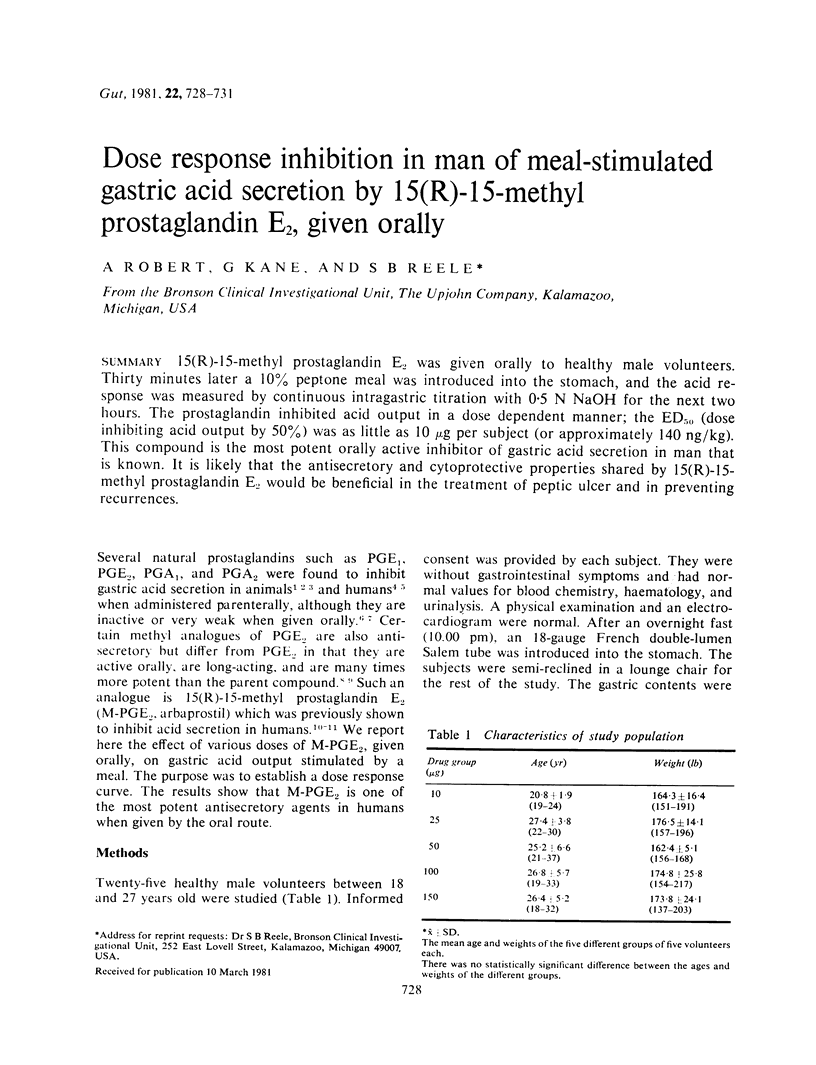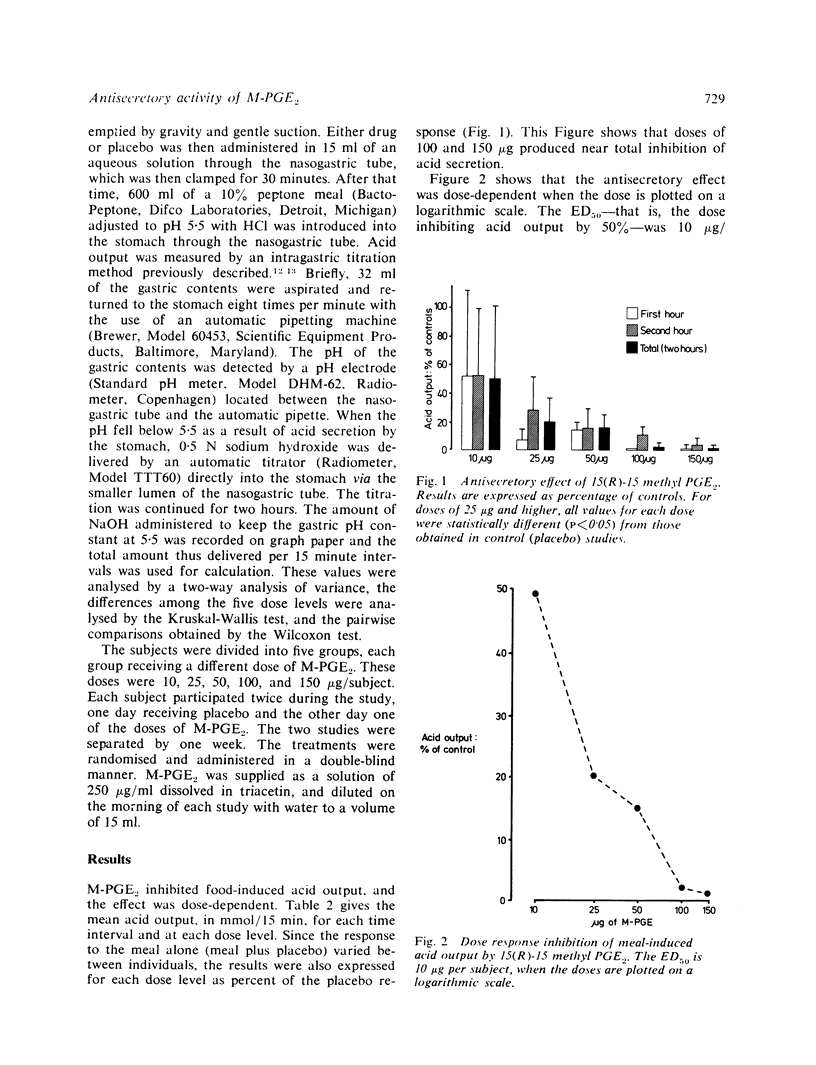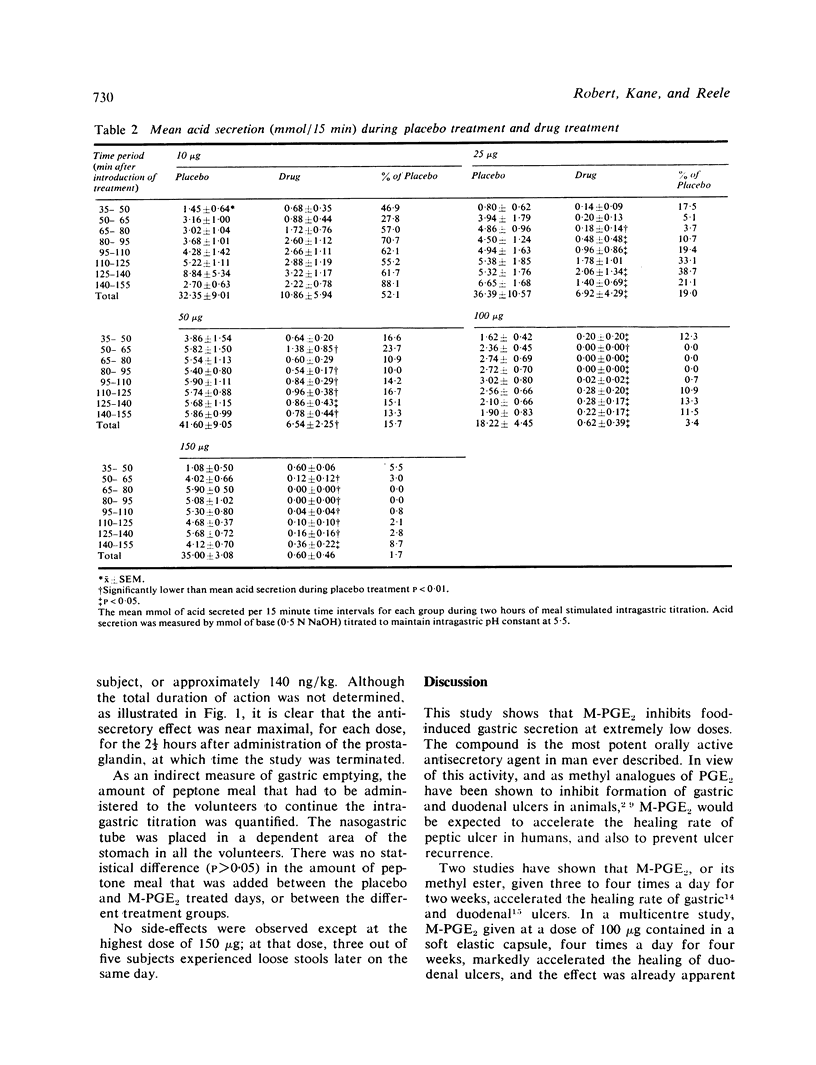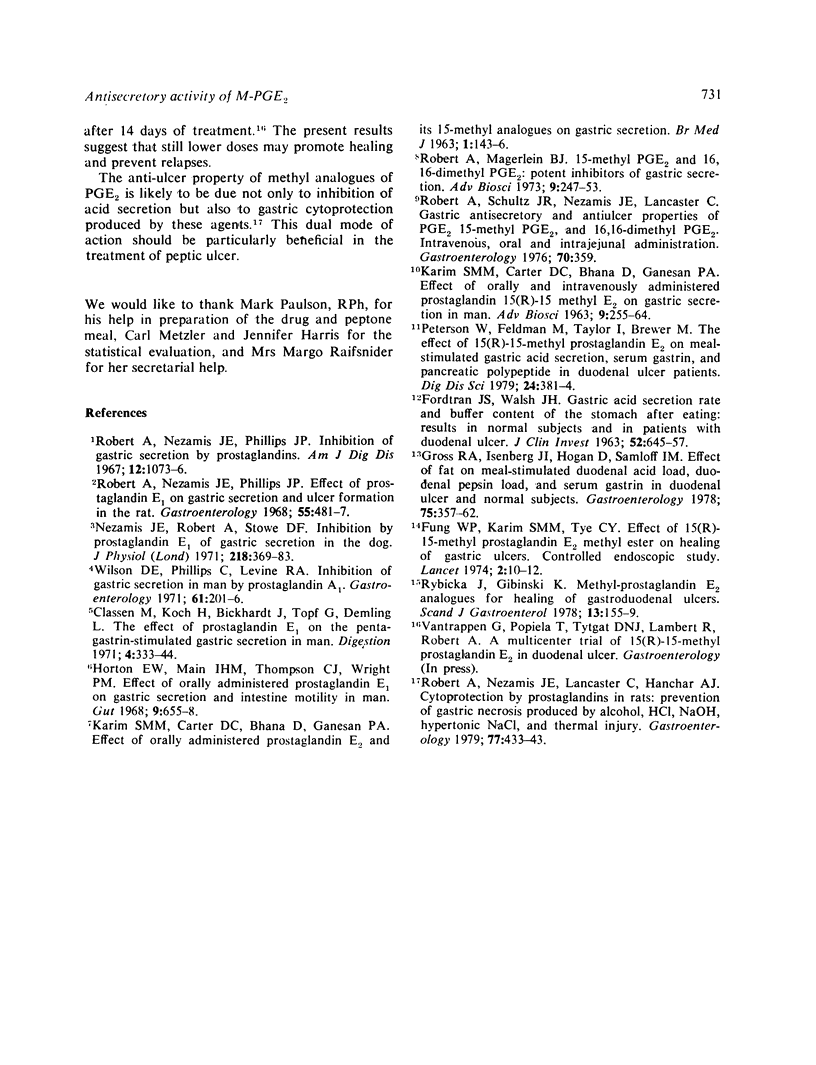Abstract
15(R)-15-methyl prostaglandin E2 was given orally to healthy male volunteers. Thirty minutes later a 10% peptone meal was introduced into the stomach, and the acid response was measured by continuous intragastric titration with 0.5 N NaOH for the next two hours. The prostaglandin inhibited acid output in a dose dependent manner; the ED50 (dose inhibiting acid output by 50%) was as little as 10 micrograms per subject (or approximately 140 ng/kg). This compound is the most potent orally active inhibitor of gastric acid secretion in man that is known. It is likely that the antisecretory and cytoprotective properties shared by 15(R)-15-methyl prostaglandin E2 would be beneficial in the treatment of peptic ulcer and in preventing recurrences.
Full text
PDF



Selected References
These references are in PubMed. This may not be the complete list of references from this article.
- Fordtran J. S., Walsh J. H. Gastric acid secretion rate and buffer content of the stomach after eating. Results in normal subjects and in patients with duodenal ulcer. J Clin Invest. 1973 Mar;52(3):645–657. doi: 10.1172/JCI107226. [DOI] [PMC free article] [PubMed] [Google Scholar]
- Fung W. P., Karim S. M., Tye C. Y. Effect of 15(R)15 methylprostaglandin E2 methyl ester on healing of gastric ulcers. Controlled endoscopic study. Lancet. 1974 Jul 6;2(7871):10–12. doi: 10.1016/s0140-6736(74)91346-4. [DOI] [PubMed] [Google Scholar]
- Gross R. A., Isenberg J. I., Hogan D., Samloff I. M. Effect of fat on meal-stimulated duodenal acid load, duodenal pepsin load, and serum gastrin in duodenal ulcer and normal subjects. Gastroenterology. 1978 Sep;75(3):357–362. [PubMed] [Google Scholar]
- Horton E. W., Main I. H., Thompson C. J., Wright P. M. Effect of orally administered prostaglandin E1 on gastric secretion and gastrointestinal motility in man. Gut. 1968 Dec;9(6):655–658. doi: 10.1136/gut.9.6.655. [DOI] [PMC free article] [PubMed] [Google Scholar]
- Nezamis J. E., Robert A., Stowe D. F. Inhibition by prostaglandin E 1 of gastric secretion in the dog. J Physiol. 1971 Oct;218(2):369–383. doi: 10.1113/jphysiol.1971.sp009623. [DOI] [PMC free article] [PubMed] [Google Scholar]
- Peterson W., Feldman M., Taylor I., Bremer M. The effect of 15(R)-15-methyl prostaglandin E2 on meal-stimulated gastric acid secretion, serum gastrin, and pancreatic polypeptide in duodenal ulcer patients. Dig Dis Sci. 1979 May;24(5):381–384. doi: 10.1007/BF01297125. [DOI] [PubMed] [Google Scholar]
- Robert A., Nezamis J. E., Lancaster C., Hanchar A. J. Cytoprotection by prostaglandins in rats. Prevention of gastric necrosis produced by alcohol, HCl, NaOH, hypertonic NaCl, and thermal injury. Gastroenterology. 1979 Sep;77(3):433–443. [PubMed] [Google Scholar]
- Robert A., Nezamis J. E., Phillips J. P. Effect of prostaglandin E1 on gastric secretion and ulcer formation in the rat. Gastroenterology. 1968 Oct;55(4):481–487. [PubMed] [Google Scholar]
- Robert A., Nezamis J. E., Phillips J. P. Inhibition of gastric secretion by prostaglandins. Am J Dig Dis. 1967 Oct;12(10):1073–1076. doi: 10.1007/BF02233268. [DOI] [PubMed] [Google Scholar]
- Robert A., Schultz J. R., Nezamis J. E., Lancaster C. Gastric antisecretory and antiulcer properties of PGE2, 15-methyl PGE2, and 16, 16-dimethyl PGE2. Intravenous, oral and intrajejunal administration. Gastroenterology. 1976 Mar;70(3):359–370. [PubMed] [Google Scholar]
- Rybicka J., Gibiński K. Methyl-prostaglandin E2 analogues for healing of gastro-duodenal ulcers. Scand J Gastroenterol. 1978;13(2):155–159. doi: 10.3109/00365527809181742. [DOI] [PubMed] [Google Scholar]
- Wilson D. E., Phillips C., Levine R. A. Inhibition of gastric secretion in man by prostaglandin A. Gastroenterology. 1971 Aug;61(2):201–206. [PubMed] [Google Scholar]


